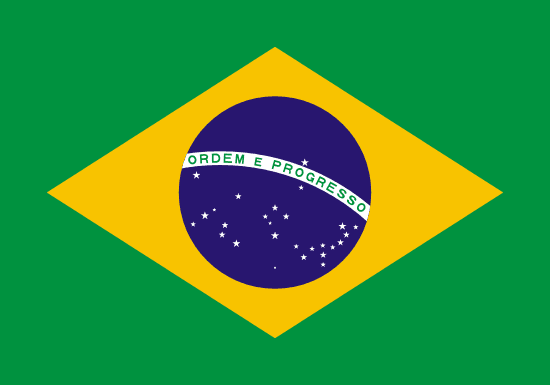"Capital de Esperança | Capital of Hope"
About:
Brasília, the capital of Brazil, was founded on April 21, 1960. The city was planned and developed by Lúcio Costa and Oscar Niemeyer under President Juscelino Kubitschek's initiative to promote interior growth. Brasília's modernist architecture distinguishes it globally, leading UNESCO to designate it a World Heritage Site in 1987. Despite initial criticism for its high costs and impersonal urban layout, Brasília has grown into a significant political, economic, and cultural center in Brazil.
When to visit:
Brasilia, the capital of Brazil, experiences a tropical savanna climate characterized by distinct wet and dry seasons. The most popular time to visit Brasilia is during the dry season, which typically occurs from May to September. During this time, visitors can expect sunny days with lower humidity levels, making it ideal for exploring the city's modernist architecture and cultural attractions. It is advisable to avoid the rainy season, which usually takes place from October to April, as heavy rainfall can disrupt outdoor activities and sightseeing.
When to avoid:
Traveling to Brasilia, Brazil during the holiday season in December is not recommended due to the high volume of tourists and increased prices for accommodations and activities. The city experiences a significant influx of visitors during this time, leading to crowded attractions and longer wait times. Additionally, the hot and humid climate of Brasilia during the summer months can be uncomfortable for travelers, especially those not accustomed to the tropical weather. To avoid the crowds and peak prices, it is advisable to plan your visit to Brasilia during the off-peak seasons.
Rainy Season (Oct–Apr)
In Brasilia, the coldest and wettest period is typically from December to March. Average temperatures range from 18°C to 28°C, with the highest rainfall in January, averaging around 209mm. This season is characterized by frequent, heavy rain showers, often in the afternoon, leading to high humidity levels. Despite the rain, the city receives around 5 hours of sunlight per day. Cloud cover is substantial, often casting a grey hue over the city. For a visitor, an average day might start sunny, but usually turns rainy in the afternoon, so carrying an umbrella is recommended.
Dry Season (May-September)
In Brasilia, the warmest part of the year typically spans from September to March, with the peak of the heat in October and November. During this time, temperatures range from 20°C (68°F) to 28°C (82°F), with the possibility of reaching up to 30°C (86°F).
Rainfall is quite high during this period, especially from December to February, which is considered the rainy season. You can expect around 200mm to 300mm of rainfall per month during these months. This can result in high humidity levels, often reaching 75-85%.
Despite the rain, Brasilia still enjoys a good amount of sunlight during the warmest part of the year. On average, you can expect 5-6 hours of sunshine per day. However, cloudiness is common due to the frequent rain showers and thunderstorms.
For a visitor, a typical day in Brasilia during this period would start warm and humid, with the possibility of rain showers in the afternoon or evening. The heat can be intense, especially in the midday sun, so it's advisable to stay hydrated and take breaks in shaded areas. Despite the heat and rain, the ample sunlight and warm temperatures make it an excellent time for outdoor activities. Just remember to carry an umbrella or raincoat for sudden showers.
Language:
Portuguese is the official and most commonly spoken language in Brasília, the capital of Brazil. As a multicultural city, it also hosts speakers of various other languages, including English, Spanish, and indigenous languages. However, Portuguese remains the primary medium of communication in all official and everyday contexts.




